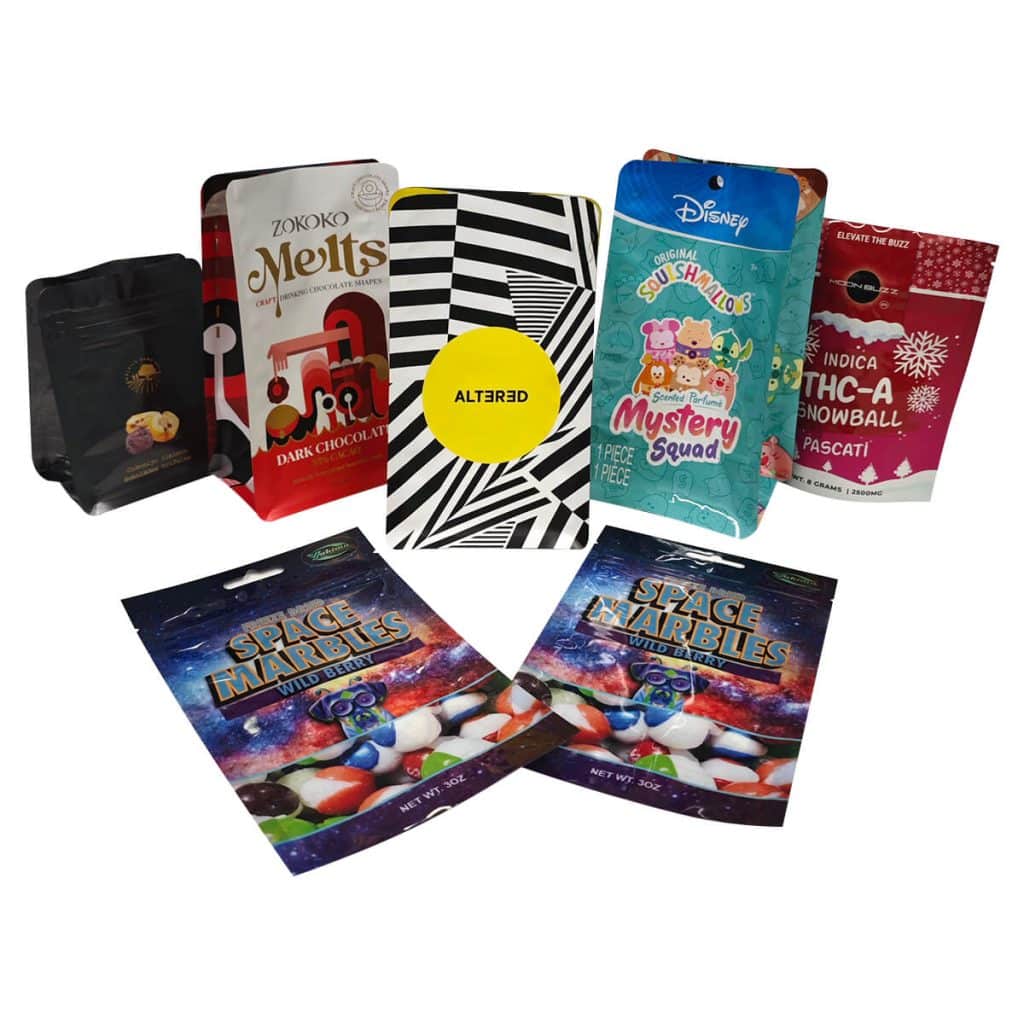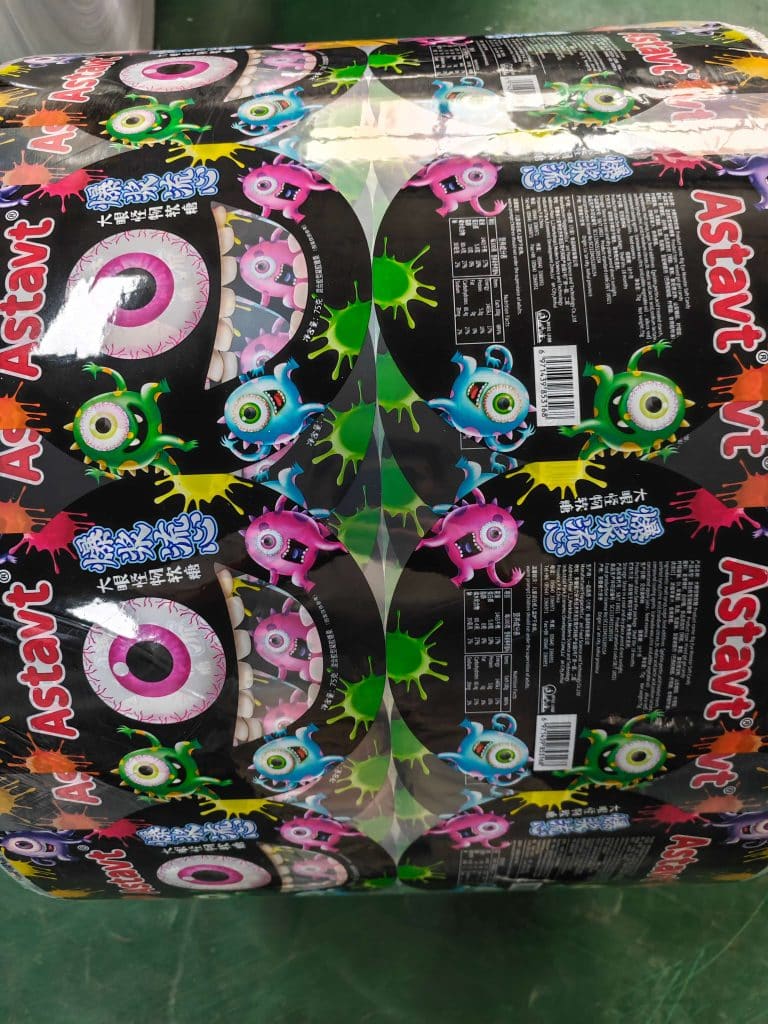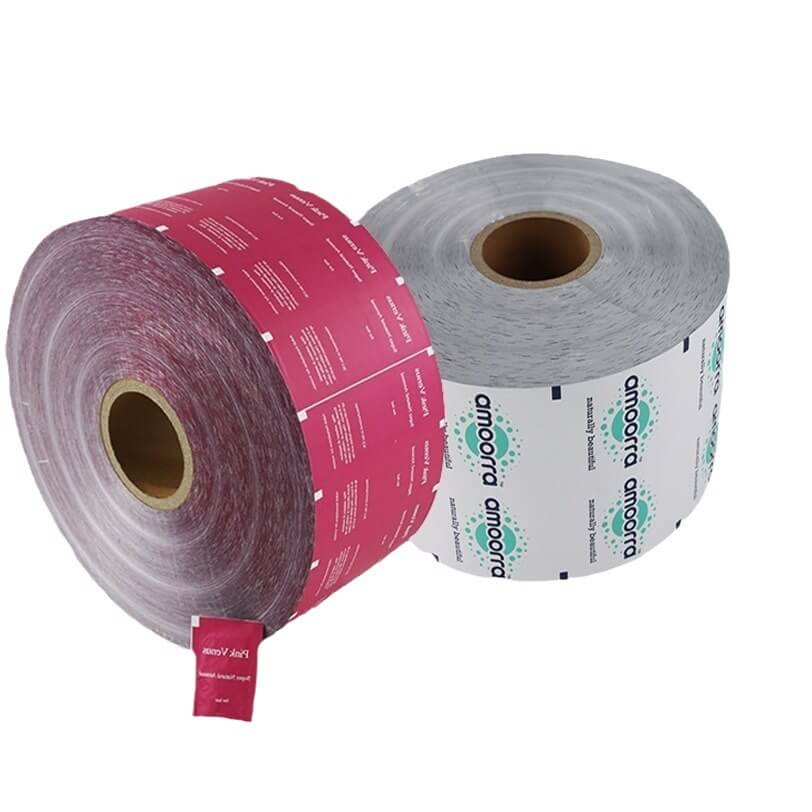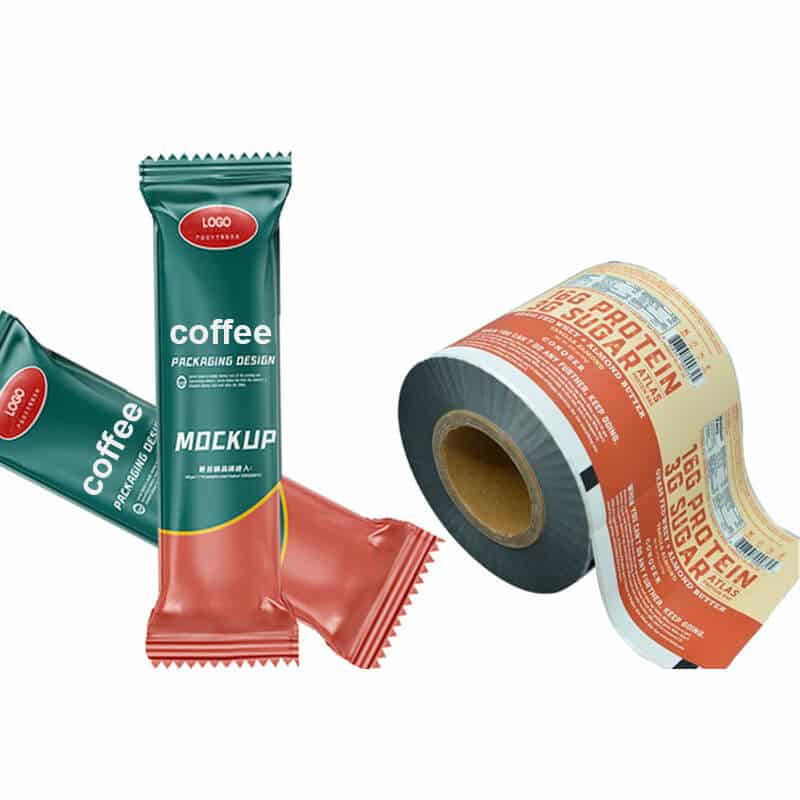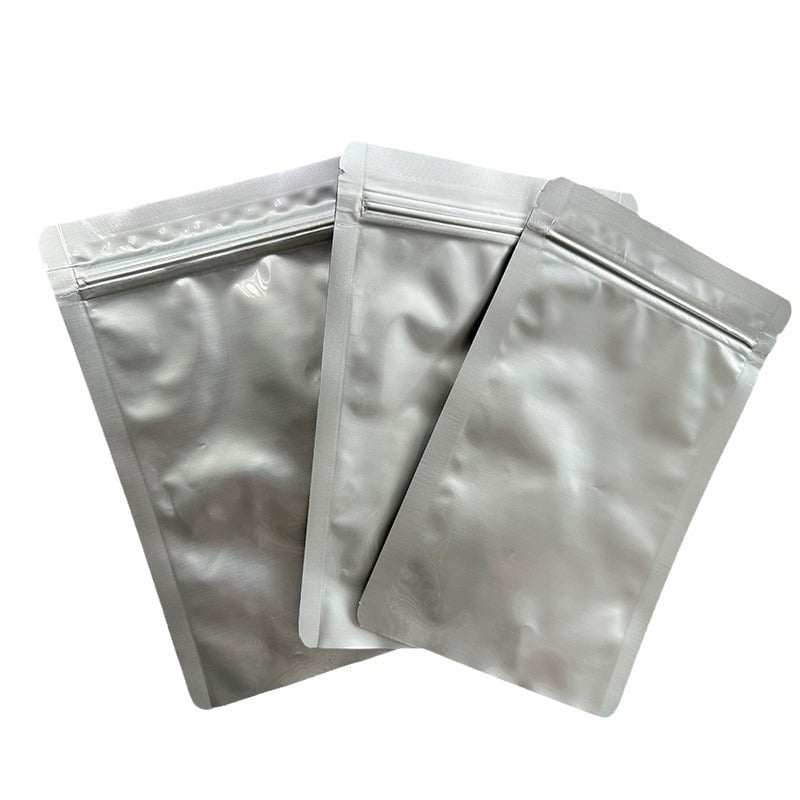Packaging products have permeated every aspect of our daily lives, and packaging films are widely used in various industries such as food, pharmaceutical, medical and machinery.
Various types of packaging films are on the market, and according to their performance and customer needs, different packaging films must be selected; for this reason, we will introduce them in this article.
For this reason, in this article, we will introduce the various types of packaging films, their performance, some similarities and differences, and some parameters of the film to facilitate customers’ making the best choice according to their needs.
1. polyethylene film(PE)
PE film uses many of the most significant plastic packaging films, accounting for over 40% of the total plastic film consumption. Although in terms of appearance, strength and other aspects, PE film could be better, it has good toughness, moisture resistance, and the ability to be used as a packaging film.
- However, it has good toughness, moisture resistance, heat sealing properties, and packaging performance.
- Good heat sealing properties.
- Processing and moulding are convenient and cheap, so they are widely used.
It has three main types:
Low-Density Polyethylene Film
LDPE film is mainly produced by extrusion blow moulding and T-molding. It is a flexible, transparent, non-toxic, odourless film with generally between 0.02 and 0.1 mm thickness.
It is good at resisting water, moisture, drought, and chemical stability. Many foods, medicines, daily necessities, and metal products are used for general, moisture-proof frozen food packaging.
However, for items with high moisture absorption and high moisture resistance requirements, better moisture resistance films and composite film packaging are necessary.
LDPE film has a large air permeability, no aroma, and poor oil resistance. It can not be used for easy oxidation of food, flavouring food, or oil-containing food packaging.
It has good air permeability, so it can be used for fruits, vegetables, and other fresh items in fresh packaging.
LDPE film heat adhesion and low-temperature heat sealability are good, so it is commonly used as a composite film adhesive layer, heat sealing layer, etc., but because of its poor heat resistance, it can not be used as a heat sealing layer of the cooking bag.
High-Density Polyethylene Film
HDPE is a tough, semi-transparent film with a milky white appearance and poor surface gloss.
HDPE film’s tensile strength, moisture resistance, heat resistance, oil resistance, and chemical stability are better than those of LDPE film. HDPE can also be heat-sealed, but it is less transparent than LDPE.
HDPE can be made into a thickness of 0.01 mm for the thin film; its appearance and thin silk paper are very similar to the feel comfortable, also known as paper film.
It has good strength, toughness, and openness. To enhance the sense of paper and reduce costs, it can be added to a small amount of light calcium carbonate.
HDPE paper-like film is mainly used to make shopping bags, garbage bags, fruit bags, and food bags.
Because of its poor airtightness, HDPE film does not retain flavour, so the storage period of packaged food is short. In addition, HDPE film can be used as the heat-sealing layer of steaming bags because of its good heat resistance.
Linear low-density polyethylene film.
LLDPE film is a recently developed new variety of polyethylene film. Compared with LDPE film, LLDPE film has higher tensile and impact strength and is tear-resistant and puncture-resistant.
For the same strength and performance as LDPE film, the thickness of LLDPE film can be reduced to 20%- 25% of LDPE film, thus reducing the cost significantly.
Even if used as heavy bags, its thickness is only 0.1 mm to meet the requirements. It can replace the more expensive polymer with two high-density polyethylene.
Therefore, LLDPE is very suitable for packaging daily necessities and frozen food. It is also used for a large number of heavy bags and garbage bags.
Surface Characteristics and Printing Adaptability of PE
PE film ink adhesion is poor; it needs to be improved using corona treatment. This indicator’s wetting tension is commonly used to identify the quality of corona treatment. Generally, printing LDPE film at 38-42mN/m and HDPE film at 40-44mN/m is good.
LDPE’s mechanical strength, gas barrier, grease resistance and other poor, but its moisture resistance, cold resistance, chemical stability, elongation, impact resistance and so on are better. As low-density polyethylene is a non-polar material, its surface tension is poor. It must be corona treatment, and its softness is better, and flexibility is also more significant; to ensure the printing overprint accuracy, it is best to use a large roll simple printing machine while paying attention to the control of the tension to prevent swings; to avoid the ink sticking to the film to be cooled to 35 ℃ or less when the roll is wound up.
HDPE film is milky white, semi-transparent, and has a hard texture; its strength, hardness, solvent resistance, gas barrier and moisture barrier are superior to LDPE, but its surface gloss is poor, generally used for small commodity bags, food bags and garbage bags.
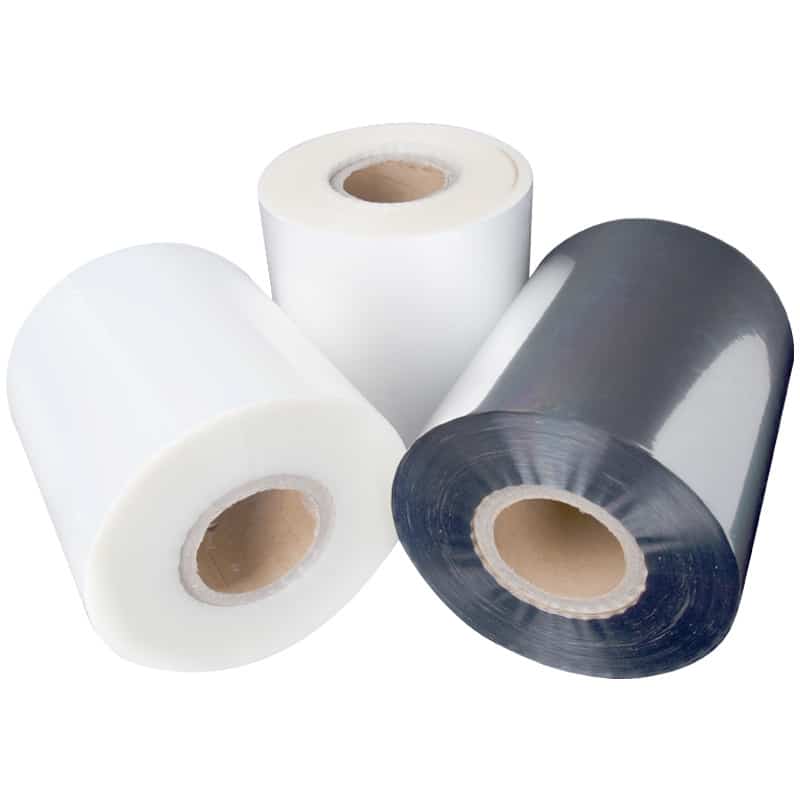
2. Polypropylene film (PP)
PP film is divided into un-stretched and bi-oriented films; the difference in performance between them is enormous, so they should be considered two different films.
Unstretched polypropylene film. Unstretched polypropylene film has an extrusion blow moulding method for producing blow-moulded polypropylene film (IPP) and a T-mode method for producing extrusion cast polypropylene film (CPP).
PP films have poor transparency and toughness, as well as high transparency and good toughness.
CPP films have better transparency and gloss and appear close to cellophane.
Compared with PE film, unoriented polypropylene film has better transparency, gloss, moisture resistance, heat resistance, and oil resistance; mechanical strength, tear resistance, puncture resistance, and good abrasion resistance; non-toxic and odourless.
And non-toxic and odorless. Therefore, it is widely used in food packaging, pharmaceuticals, textiles and other items. But its drought resistance is poor, in 0 ~ 1O ℃ when the brittle, so it can not be used for frozen food packaging.
Undrawn polypropylene film has a high heat-resistant temperature and good heat-sealing properties, so it is often used as the heat-sealing layer of cooking bags.
Bi-oriented polypropylene film (BOPP)
Bi-oriented polypropylene film (BOPP). Compared to unoriented polypropylene films, BOPP films have the following main characteristics.
- Increased transparency and gloss, comparable to cellophane and
- Improved mechanical strength, but with reduced elongation; and
- Improved cold resistance will not be brittle in -30 ~ ~ -50 ℃.
Moisture and air permeability are reduced by about half, and the organic vapour permeability is also reduced to different degrees.
A single film can not be directly heat-sealed but can be coated with adhesives and other plastic film composites to improve its heat-sealing properties.
3. Polyvinyl chloride film(PVC)
PVC film is divided into flexible film and rigid film. Soft PVC film elongation, tear strength, and cold resistance are better; they are easy to print and heat seal and can be made into a transparent film. Due to the soft PVC film with plasticizer odour, plasticizer migration and other issues generally can not be used for food packaging. However, the internal plasticization method of production of flexible PVC film can be used for food packaging. Generally speaking, PVC flexible film is mainly used for industrial products and non-food packaging.
Rigid PVC film, commonly known as PVC cellophane. High transparency, stiffness, good toughness, twist stability, good airtightness, aroma retention and good moisture resistance; excellent printing performance; can produce non-toxic film. It is mainly used for candy twist packaging, textiles, clothing packaging, cigarettes, and food boxes for outsourcing film. However, the cold resistance of rigid PVC is poor and brittle at low temperatures, so it is unsuitable for frozen food packaging materials.
PVC surface properties and printing adaptability
PVC film has a coloured and colourless point, its surface gloss is good, and ink adhesion is better than PE and PP film. It generally does not need corona treatment before printing but with water-based ink printing or the need for corona treatment. According to the amount of plasticizer, it can be divided into three kinds of films: soft, semi-soft and hard.
PVC film is printed by surface printing or liner printing process with vinyl chloride-vinyl acetate copolymer ink or polypropylene ink. It generally uses high-frequency thermal bonding; if the heat and part of the conductor in the high-frequency thermal bonding will be baked and broken, so pay attention to the insulating properties of the ink, especially the black ink and gold and silver ink.
Soft PVC film contains many plasticizers; the precipitation of these plasticizers will enter the ink layer, resulting in discoloration, adhesion, ink migration and other failures. As the plasticizer precipitation is a slow process, the choice of ink should be appropriate; never use hard PVC ink. Soft PVC film is straightforward to stretch, with colour registration and alignment difficulties; heat is effortless to pull, so it is necessary to reduce the drying temperature and control the tension using a sizeable roller-type printing machine to ensure registration accuracy.
4. Polystyrene Film(PS)
- PS film has high transparency and gloss, beautiful and
- Good printing performance; low water absorption and
- The transmission rate of gas and water vapour is significant.
Unstretched polystyrene film is hard and brittle, and its elongation, tensile strength, and impact strength are low, so it is rarely used as a flexible packaging material. In packaging, biaxially oriented polystyrene (BOPS) film and heat-absorbing film are mainly used.
BOPS film is produced by bidirectional stretching. Its physical and mechanical properties, especially elongation, impact strength, toughness, etc., have significantly improved and maintained the original transparency and gloss. BOPS film’s good air permeability makes it suitable for packaging Fruits, vegetables, meat, fish, other fresh food, and flowers.
5. Polyvinylidene Chloride Film (PVDC)
- PVDC film is flexible, transparent, and high-barrier.
- It has excellent moisture resistance, airtightness and flavour retention
- It has excellent moisture resistance, air tightness, fragrance retention, and excellent resistance to strong acids, alkalis, chemicals, and oil.
- Unstretched PVDC film can be heat-sealed.
It is very suitable for packaging food and can keep the flavour of food unchanged for a long time.
Although PVDC film has good mechanical strength, its stiffness is poor, too soft and easy to stick, and has poor operability. In addition, PVDC crystallinity, its film is easy to perforate or produce micro-cracks, and its price is also higher. So, at present, PVDC film in the form of a single film is used less but is mainly used to make composite films.
6. Ethylene Vinyl Acetate Copolymer Film(EVA)
The performance of EVA film is related to the content of vinyl acetate (VA); the higher the VA content, the better the film’s elasticity, stress crack resistance, low-temperature resistance and heat sealability. When the VA content reaches 15% to 20%, the film’s performance is close to that of soft PVC film, and the lower the VA content, the less elastic the film is and the closer its performance is to that of LDPE film. Generally, the content of VA in EVA film is 10%~20%.
EVA film is good for low-temperature heat sealing and inclusion sealing. It is an excellent sealing film and is commonly used as a composite film heat sealing layer. Heat-resistant EVA film is poor. The highest temperature is 60 ℃. Its airtightness is poor, and it is easy to stick to, odour, etc. So, single-layer EVA film is generally not used to produce PVC film. Therefore, single-layer EVA film is generally not directly used for packaging food.
7. Polyvinyl Alcohol Film(PVA)
PVA film is divided into water-resistant and water-soluble films. Water-resistant films are made from PVA with a degree of polymerization of more than 1,000 and are fully saponified. Water-soluble films are made from partially saponified PVA with a low degree of polymerization. Water-resistant PVA films are mainly used in packaging.
- PVA film has good transparency and gloss.
- It is not easy to accumulate static electricity, adsorb dust, and
- Good printing performance. In the dry state, it has excellent airtightness and fragrance retention.
- Good oil resistance; good mechanical strength, toughness and resistance to stress cracking.
- It can be heat-sealed; PVA film has a large moisture permeability, strong absorption, and dimensional instability.
So, it is usually coated with polyvinylidene chloride, also known as K-coating. This coated PVA film in high humidity can also maintain an excellent airtight aroma and moisture resistance, which is very suitable for packaging food.PVA film is often used as a barrier layer of composite film, and its composite film is mainly used for fast food, meat products, cream products, and other food packaging.PVA monofilm is also used in large quantities for textiles and clothing packaging.
Water-soluble PVA film can be used for sterilizing drugs, detergents, bleach, dyes, pesticides and other chemical products, such as metered packaging and patient laundry bags, without having to open directly into the water can be used.
8. coated high barrier plastic film(PVA)
Polyvinyl Alcohol High Barrier Composite Film is a film with extremely high barrier properties formed by coating modified polyvinyl alcohol water-soluble liquid on polyethylene plastic as the substrate.
As the polyvinyl alcohol high-barrier composite film has good barrier properties and meets the requirements of environmental protection, the
The market prospect of this kind of packaging material is very bright, and there is a broad market space in the food industry.
9. low-density polyethylene film (LDPE)
Low-density polyethylene is under high pressure, ethylene free radical polymerization and synthetic resins, also known as “high-pressure polyethylene.”LPDE main chain with different lengths of branched molecules with a branched chain, in the main chain of every 1000 carbon atoms with about 15 to 30 ethyl, butyl, or a more extended version of the branched chain.
Because the molecular chain contains more long and short branches.
- Therefore, the density of the product is low, soft, low-temperature resistance,
- Impact resistance, good chemical stability,
- Generally, it is resistant to acid (except oxidizing solid acid), alkali and salt corrosion and has good electrical insulation properties.
Low-density polyethylene film is also used in various applications, such as packaging. Polyethylene packaging film variety’s performance also varies; the single-layer film performance of a single composite film performance complementary becomes the primary material of the packaging bag products.
We adjust the raw material formula and reasonably optimize the production process, successfully making PE plastic bags with high transparency, no powder, easy to open, and other industry advantages.
Widely used in garment bags, hardware bags, and other series of products ou, the packaging production of PE bags looks pure, unadulterated of any impurities, with no crease phenomenon, no stains, and the surface feel smooth, delicate, toughness super.
10. Polyester Film (PET)
- Polyester film is most widely used in bi-oriented polyester film (BOPET).
- PET film is a packaging film with a more comprehensive performance.
- Its transparency is good and glossy.
- Good airtightness and fragrance retention; medium moisture resistance; the
PET film has excellent mechanical properties; its toughness is the best of all thermoplastics; tensile strength and impact strength are much higher than the average film; and good stiffness and dimensional stability, suitable for printing, paper bags and other secondary processing.PET film also has excellent heat resistance, cold resistance and good resistance to chemicals and oil resistance. However, it is not resistant to strong alkalis; it is easy to carry static electricity; there is no proper anti-static method, so the packaging of powdered goods should be noted.
PET film heat sealing is extremely difficult, and the current price is also higher, so it is rarely used in the form of a single film, mostly with good heat sealing PE or PP film composite or using polyvinylidene chloride coating. This composite film based on PET film is the ideal material for mechanized packaging operations and is widely used for food packaging, such as steaming, baking, and freezing.
Surface Properties and Printing Adaptability of PET
Polyester film (PET) is a thermoplastic engineering plastic. It is a film material extruded into a thick sheet and then stretched in both directions.
Polyester film is characterized by excellent mechanical properties, high rigidity, hardness and toughness, puncture resistance, friction resistance, high and low-temperature resistance, chemical resistance, oil resistance, air tightness and good fragrance retention.
It is one of the commonly used substrates for permeation-blocking composite films, but its corona resistance is not good.
Polyester film is more expensive, and its thickness is generally 0.12mm. It is commonly used as the outer layer of food packaging materials, and it has better printability. Polyester film’s complexity and difficulty in judgment bring specific difficulties to customs supervision.
PET is a kind of transparency, and gloss is the perfect film; its heat resistance is good, tension control than PE film is low, not easy to dissolve, sound gas barrier and good odour barrier, so it is commonly used in the printing of cooking bags, widely used polyurethane ink; heat resistance requirements are not high, commonly used polyamide ink.
PET film insulation is very good. However, the printing process is prone to static electricity, so high-speed printing needs a static eliminator. The drying temperature of PET film can be controlled higher, but the film surface temperature should not exceed 85 ℃. When winding, the film should be cooled to room temperature.
11. Nylon plastic film (PA)
Nylon film mainly consists of two kinds: bidirectional stretch film (BONY) and unstretched film. The former has outstanding elongation and is mainly used for deep-stretch vacuum packaging.
- Nylon film is a very tough film.
- Non-toxic and odourless, good transparency, glossy, and not easy to accumulate static electricity.
- Good printing performance. Its mechanical strength is high.
- Tensile strength is three times that of PE film.
- Excellent abrasion resistance and puncture resistance.
- Nylon film has good heat resistance, sweat resistance and oil resistance, but heat sealing is difficult.
In the dry state, nylon film has good air tightness, but its moisture permeability is extensive, with strong water absorption. In a high-humidity environment, the dimensional stability is poor, and the airtightness decreases sharply. Therefore, it is often coated with polyvinylidene chloride (called KNY) or laminated with PE film to improve its water resistance, moisture barrier, heat sealing properties, etc. This NY/PE composite film is widely used for food packaging. Nylon packaging is used in large quantities to produce composite films and as a substrate for aluminized films.
Nylon films and their composite films are mainly used for packaging greasy, general, frozen, and boiled food. Unstretched nylon film can be used for vacuum packaging of flavoured meats, bony meats and other foods due to its high elongation.
The chemical name of nylon is polyamide (PA), and there are many varieties of industrially produced nylon, of which the main varieties used to make film are nylon 6, nylon 12, nylon 66 and so on.
Nylon film is challenging and has good transparency, gloss, and high tensile strength.
It also has good heat resistance, cold resistance, oil resistance and resistance to organic solvents, excellent abrasion resistance, excellent puncture resistance, and is a relatively soft, excellent oxygen barrier.
However, the barrier to water vapour is poor, moisture absorption, moisture permeability, and heat sealing are poor, suitable for packaging hard goods, such as greasy food, meat products, fried food, vacuum-packed food, and steamed food.
Flexible plastic packaging for printing The vast majority of nylon film is biaxially oriented nylon film (BOPA), which is soft, puncture-resistant, and has other special properties. It is widely used in high-temperature cooking food, boiled food, vacuum packaging, and other products.
Bi-oriented polyamide film (BOPA) quickly absorbs moisture deformation of the film. Therefore, it is necessary to ensure that the humidity of the printing environment is not too high. For the printing of the film not to destroy its original aluminum packaging film, after opening the seal to be printed immediately, the printing of nylon films needs to be preheated, preheating temperature of 50 ~ 80 ℃; printing tension should be appropriately lowered; printing to be moderate; ink adaptability, depending on the structure of different products to choose, if it is a boiled bag must be selected to boil the ink; printed products must be sealed and preserved, put into the dry compound ripening room storage, and as soon as possible! Compound.
12. Ethylene Vinyl Alcohol Copolymer Film(EVAL)
EVAL film is a new high-barrier film that has developed in recent years.
- It is transparent and has an excellent oxygen barrier,
- It has good transparency, excellent oxygen barrier, fragrance preservation and oil resistance.
However, it is highly hygroscopic, and its barrier properties are reduced by moisture absorption.
EVAL films are usually made into composite films with moisture barrier materials and are used for packaging sausages, hams, other meat products, fast food, etc. EVAL monofilms can also be used to package fibre and woollen products.
13. Polycarbonate film (PC)
PC film is odourless and non-toxic, similar to the transparency and lustre of cellophane. The strength of PET film and BONY film is comparable, especially the impact strength, which is very prominent.
- PC film has excellent fragrance retention,
- good airtightness and moisture resistance.
- It has a good blocking of ultraviolet transmittance.
- Its oil resistance is good; heat and cold resistance are also excellent.
It can be sterilized at high temperatures and pressures; low-temperature and freezing resistance is better than PET film.
However, its heat sealability could be better. PC film is the ideal food packaging material. It can be used for cooking, freezing, and flavouring food packaging. Due to its high price, it is mainly used for the packaging of pharmaceutical tablets and aseptic packaging.
14. Cellulose acetate film (CA)
CA film is transparent, glossy and has a smooth surface. It is stiff, dimensionally stable, and does not readily accumulate electricity. It has good processability; it is easy to bond, and printability is also excellent. CA film has water resistance, folding resistance and durability. CA film’s air and moisture permeability are more significant, and this feature can be used for vegetables, fruits and other “breathing” type packaging.
CA film is often used as the outer layer of composite film because of its good appearance and easy printing. Its composite film is used in many pharmaceutical, food, cosmetic, and other packaging applications.
15. Cast polypropylene film (CPP)
Cast film is a non-stretching, non-directional, flat extruded film produced by melt calendering quenching.
It is characterized by
- Fast production speed, high yield.
- Film transparency, gloss,
- thickness uniformity, and an excellent balance of properties.
Since it is a flat extruded film, subsequent work such as printing, laminating, etc., is highly convenient and widely used in textiles, flowers, food, and daily necessities packaging.
16、Aluminized plastic film
The aluminized film has the characteristics of both plastic film and metal.
Aluminizing the surface of the film shields light and prevents ultraviolet irradiation, which not only prolongs the shelf life of the contents but also improves the brightness of the film, replacing aluminum foil to a certain extent.
It also improves the brightness of the film, partially replaces aluminum foil, and has inexpensive, beautiful, and better barrier properties.

